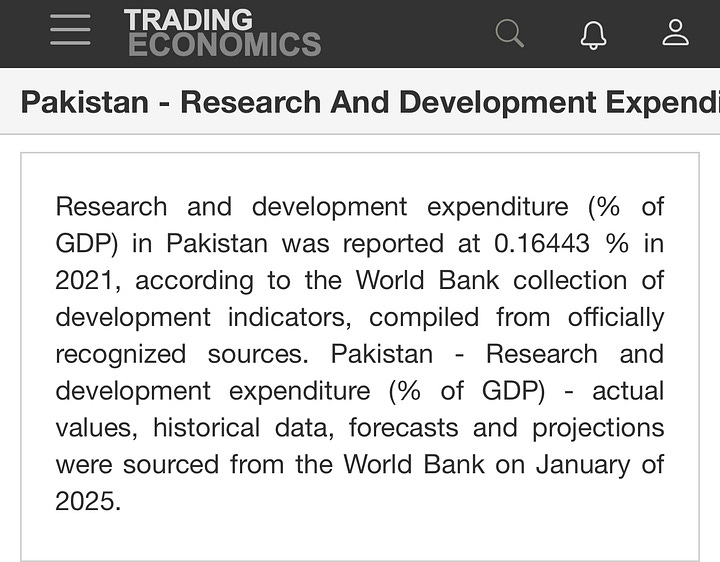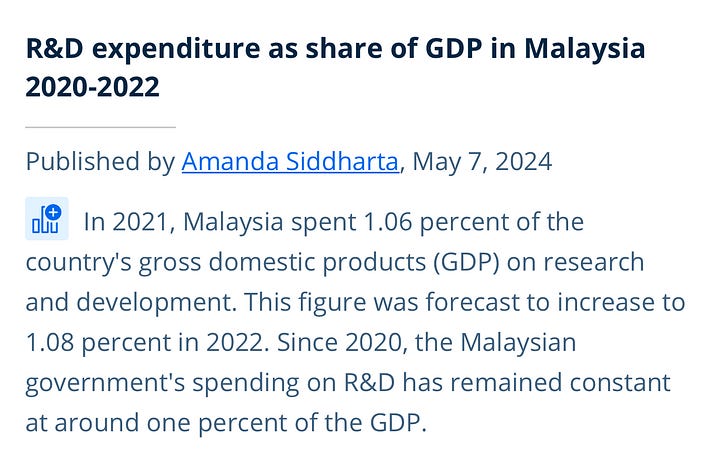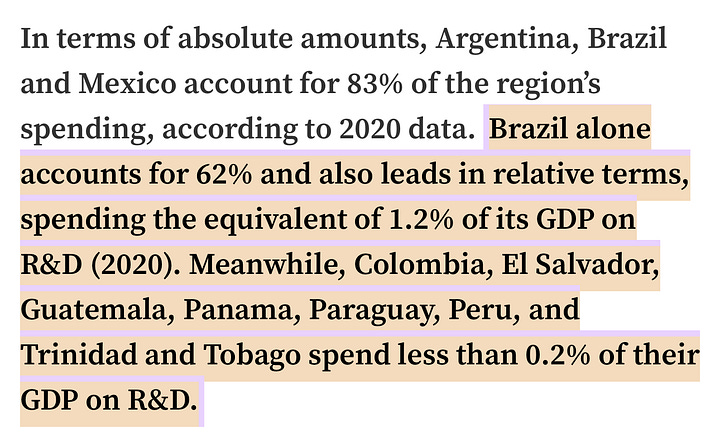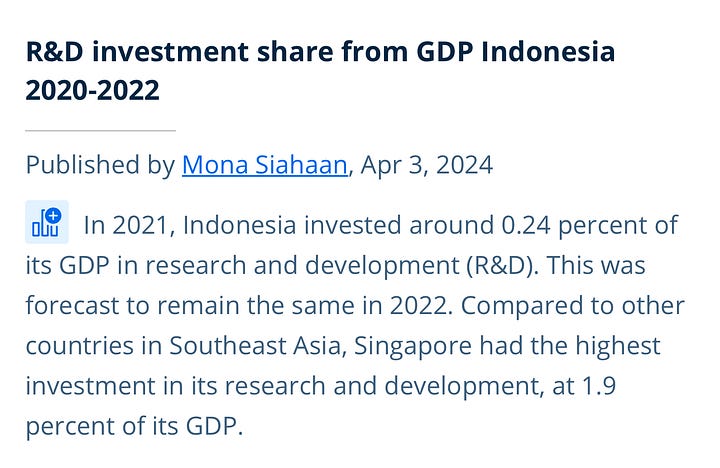Pakistan’s Scientific Decline: A Nation Stuck in the Past While the World Moves Forward
From Innovation to Irrelevance: How Pakistan is Losing the Science and Technology Race




As of January 2025, Pakistan remains far behind not just global leaders like China and India but also comparable developing countries in Latin America and Southeast Asia, such as Malaysia, Indonesia, Brazil, and Mexico. The country's struggle in science and technology is reflected in its low research output, minimal funding, outdated education system, and lack of innovation ecosystems.
1. Research and Development (R&D) Investment: Among the Lowest in the World
Investment in research and development is a key indicator of a country’s scientific progress. Unfortunately, Pakistan continues to underfund this critical sector:
Pakistan: Less than 0.3% of GDP goes to R&D, one of the lowest among developing economies.
Indonesia: Invests 0.3% of GDP but has a growing startup and digital economy.
Malaysia: Allocates around 1.0% of GDP, showing strong industry-academia collaboration.
Brazil & Mexico: Spend 1.2% and 0.9% of GDP, respectively, on R&D, reflecting their commitment to scientific progress.
With such low investment, Pakistan’s scientific institutions remain underfunded, and innovation remains stagnant.
2. Poor Research Output and Global Ranking
Pakistan’s global standing in scientific research is concerning:
Pakistan ranks 91st in the Global Innovation Index (2024).
Malaysia ranks 33rd, demonstrating strong technological progress.
Indonesia is 54th, indicating steady improvement.
Brazil and Mexico are in the top 50, reflecting better research ecosystems.
Pakistan produces fewer high-impact research publications and patents, meaning its scientific advancements are not translating into real-world applications.
3. STEM Education and Talent Drain
A strong scientific sector requires a skilled workforce, yet Pakistan faces serious deficiencies in STEM education:
Low STEM Graduates: Fewer students enroll in science, technology, engineering, and math fields.
Brain Drain: Many of the country’s best scientists and engineers leave for opportunities abroad due to low salaries, lack of research funding, and political instability.
Poor Industry-Academia Collaboration: Unlike Malaysia or Brazil, where universities and industries work together, Pakistan has minimal links between research institutions and the private sector.
4. Weak Technological Innovation
Pakistan’s tech and industrial sectors struggle to produce globally competitive innovations:
Malaysia dominates high-tech exports, especially in semiconductors.
Indonesia is making progress in the digital economy, including fintech and AI applications.
Brazil is a leader in biotechnology and pharmaceuticals in Latin America.
Pakistan remains heavily reliant on importing technology rather than developing its own.
Even in critical sectors like agriculture and healthcare, Pakistan lacks scientific breakthroughs, instead depending on foreign expertise.
5. Inconsistent Policy and Governance
One of the biggest reasons for Pakistan’s lag in science is the lack of long-term government commitment:
Funding for scientific institutions is erratic, often cut due to economic crises.
Policies lack continuity, with frequent leadership changes in education and science ministries.
No clear roadmap for innovation, unlike Malaysia, which has structured policies to promote research and technology.
6. Recent Developments: Small Steps, But Not Enough
Despite these issues, some progress has been made:
Solar Energy Expansion: Pakistan has imported 25 gigawatts of solar panels from China between 2020 and 2023, increasing power capacity by 50%.
Electric Vehicle Market: There are predictions that 50% of Pakistan’s vehicles could be electrified by 2030, though most EV technology is imported.
However, these developments are not enough to close the widening gap in scientific and technological advancements.
Conclusion
Pakistan is significantly behind in science and technology compared to its regional and global counterparts. To catch up, the country must:
Increase R&D funding to at least 1% of GDP in the short term.
Prioritize STEM education and create incentives to retain top talent.
Develop strong industry-academia partnerships to commercialize research.
Create a national innovation strategy with stable policies and consistent funding.
If immediate action is not taken, Pakistan risks falling even further behind, missing out on the benefits of the global knowledge economy.


